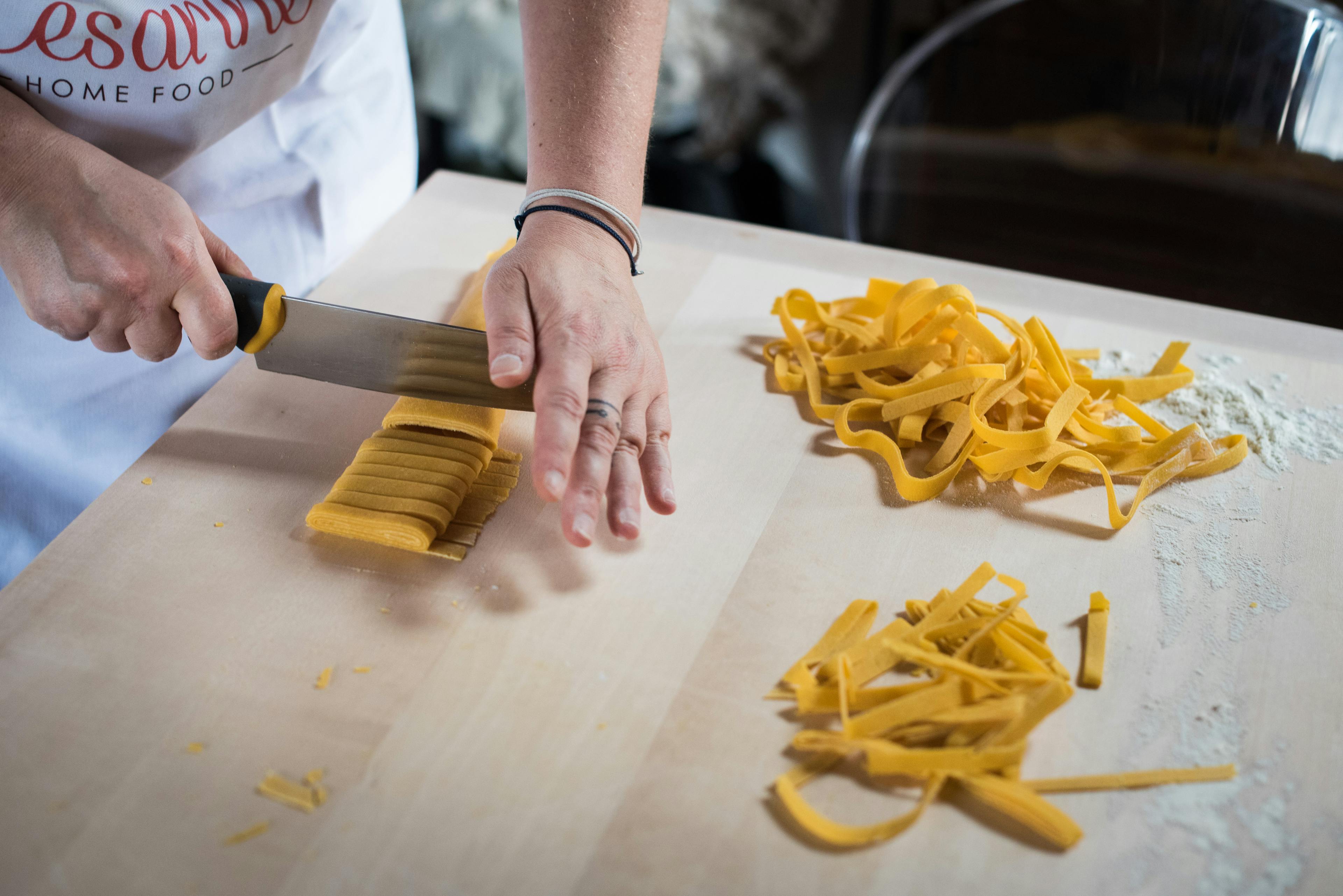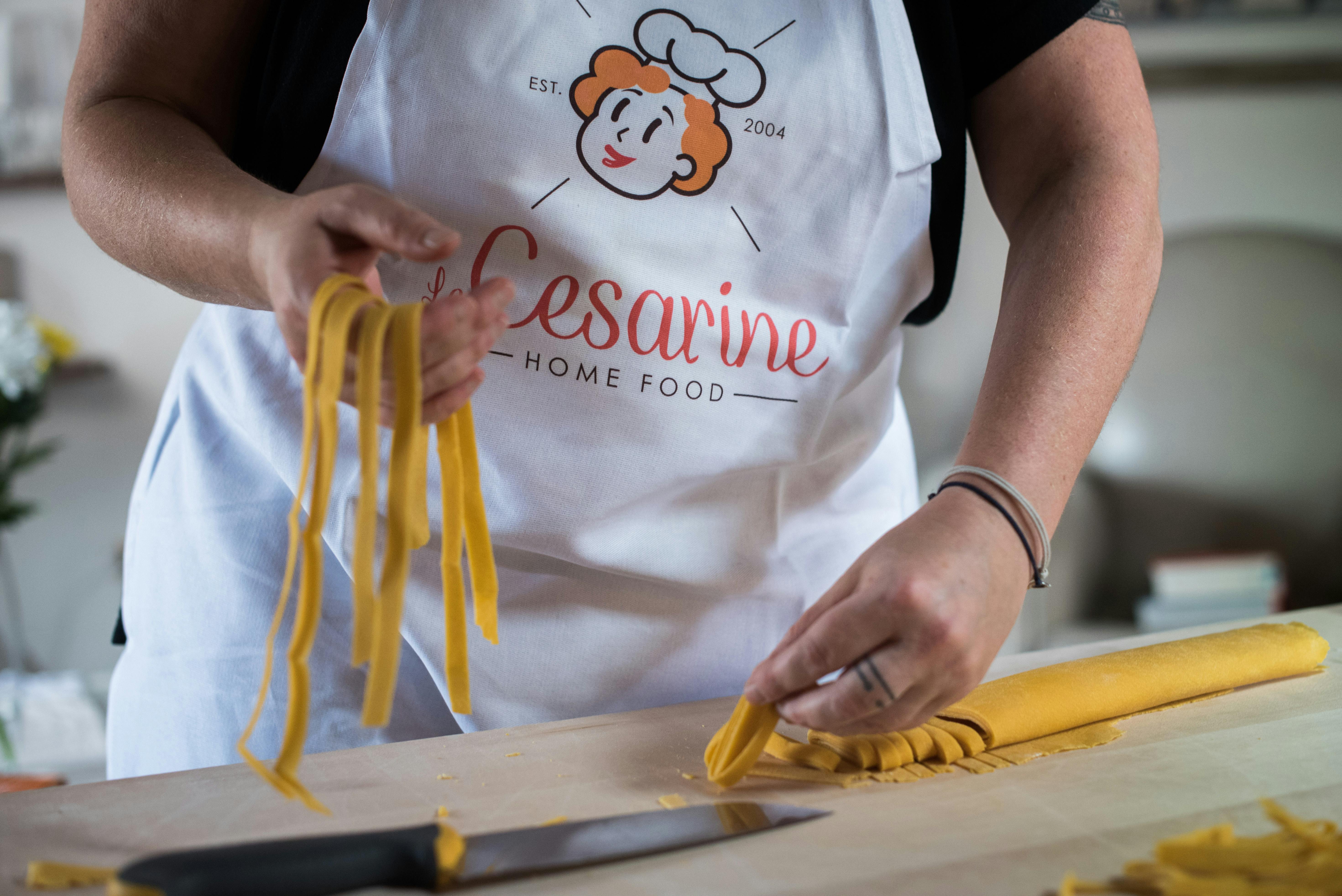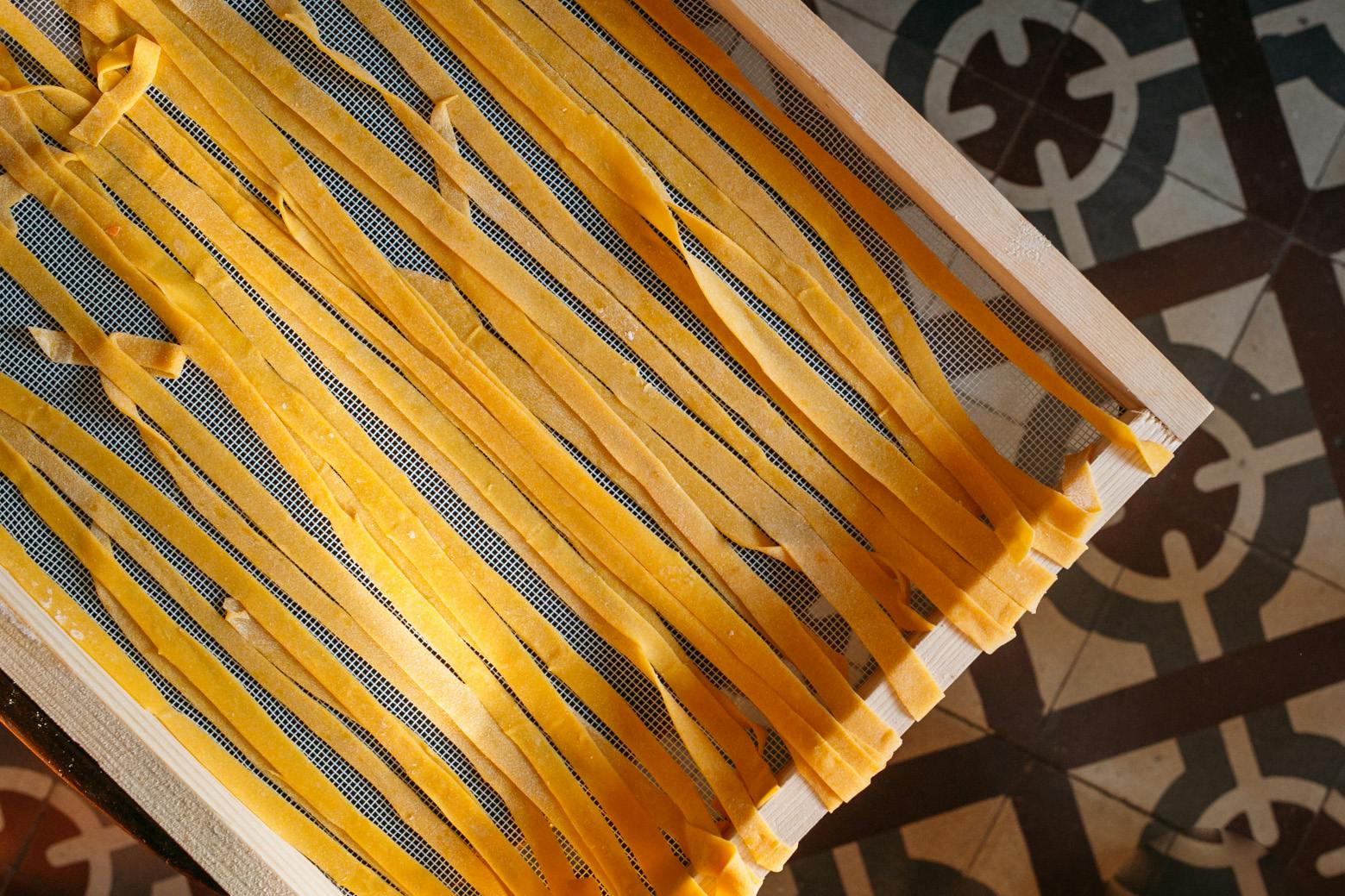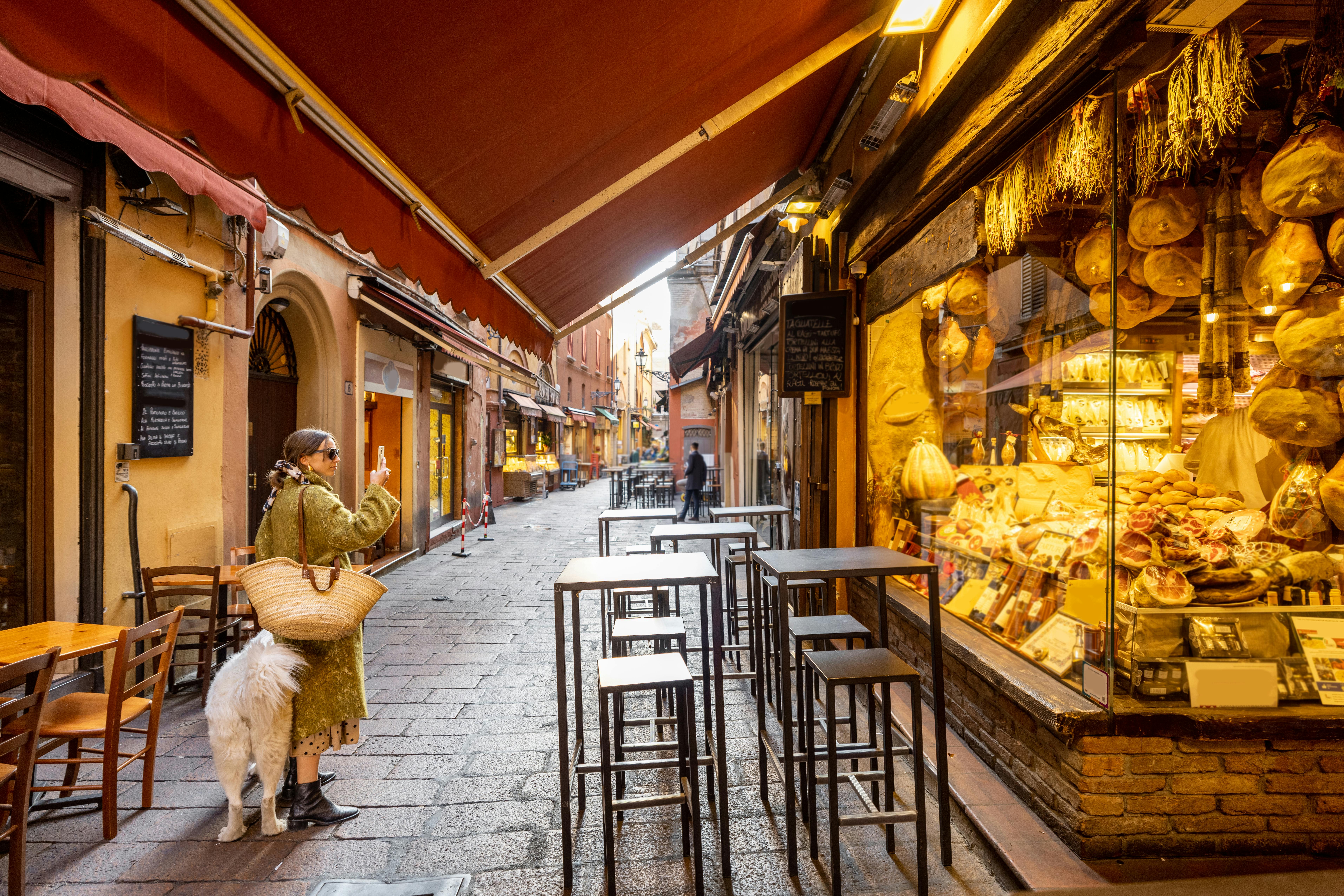

The pasta, Italy's pride and joy: more than just a dish, it's a journey through the traditions of the Bel Paese. With a rich and fascinating history, pasta is not only an integral part of the Mediterranean diet but also a symbol of conviviality and sharing.
The "sfoglia"
Fresh egg pasta (the "sfoglia"), with its intense yellow color, is a cornerstone of Emilia-Romagna's cuisine: from Parma to Modena, from Bologna to Ferrara, it forms the basis of culinary delights such as tortellini, lasagne, cappellacci, and tagliatelle. Walking through the historic streets of Emilia-Romagna's towns, the golden shades of various types of pasta peek out from the windows of gourmet shops and restaurants.

Fresh egg pasta (the "sfoglia"), with its intense yellow color, is a cornerstone of Emilia-Romagna's cuisine: from Parma to Modena, from Bologna to Ferrara, it forms the basis of culinary delights such as tortellini, lasagne, cappellacci, and tagliatelle. Walking through the historic streets of Emilia-Romagna's towns, the golden shades of various types of pasta peek out from the windows of gourmet shops and restaurants.
Buying fresh pasta is always a rewarding experience, but making it yourself at home is even more so and easier than you might think! You only need two ingredients (flour and eggs), a rolling pin, and a bit of elbow grease. That's right: you don't need any pasta machine to roll out the sfoglia! Sure, it takes some practice, but once you've mastered the technique, making pasta by hand will be a breeze and something you won't forget... a bit like riding a bike.
So, equip yourselves with a cutting board and a wooden rolling pin, a scraper (or spatula knife), and let's see how to make pasta dough like a pro!

Fresh pasta
Let's learn how to prepare the dough, the foundation of many iconic dishes in our cuisine
Ingredients
- 400 g of flour
- 4 eggs
Method
- Place the flour on the cutting board and make a small mountain with a hole in the middle; then, break the eggs into the hole. Using a fork, gradually incorporate the flour from the outside to the inside. Be careful not to let the egg spill over the sides.
- When the mixture starts to solidify, use your fingertips to gently work it into a rough dough. Don't use your whole hand at this stage, just your fingertips: it's much more efficient and less messy. Once the dough becomes more solid, scrape any pasta residue from the cutting board and incorporate it into the dough itself.
- Now, start kneading the dough with regular movements for 10-15 minutes until you get a smooth and soft mixture. Make sure to stretch out the dough well so that the fibers become elastic. At the end of the kneading, you should have a silky-smooth ball of dough that is elastic to the touch. To check if your dough is ready, cut it in half: if you see air bubbles, it means you've kneaded it enough. If there are no air bubbles, knead it for a few more minutes to incorporate more air.
- Finally, shape your dough into a ball and make two cuts in the top forming a cross: this will help the fibers expand as the pasta rests. Then, wrap the pasta ball in cling film and let it rest for 30 minutes to 1 hour. It's important to wrap the pasta completely so that it doesn't dry out.
- Once the resting phase is over, sprinkle the cutting board with some flour and start rolling out the dough. First, flatten the ball slightly with the palm of your hand and roll it on the cutting board so it's covered in flour: this will prevent the rolling pin from sticking to the dough.
- Now you can start rolling out the sfoglia using the rolling pin: proceed with movements from the center outwards and make sure to turn the dough frequently so that your sfoglia has a more regular shape. A tip: when the pasta is well rolled out, it's easier to turn it if you gently wrap it around the rolling pin; never use your hands to lift and turn it as it could break.
How thin should the sfoglia be? Well, it depends on the recipe you're preparing. However, a simple way to tell if you've rolled out your pasta thin enough is to lift it with the rolling pin and hold it up to the light: if you can see the light shining through the pasta, then it's thin enough. In Bologna, tradition has it that you should be able to see the Basilica of San Luca through your sfoglia: only then is it thin enough!
Well done! Now you know the basics to prepare many iconic dishes of Italian cuisine: from tortellini to tagliatelle, from lasagne to cappellacci. The sky's the limit!
Fun fact: did you know that the Cesarine broke a world record? Yes indeed: we rolled out a sfoglia that was longer than an American football field!
Our cooking classes dedicated to pasta dough
Do you want to learn how to roll out pasta dough like a true Emilian 'zdora'? Take a look at our extensive range of courses dedicated to fresh pasta!
